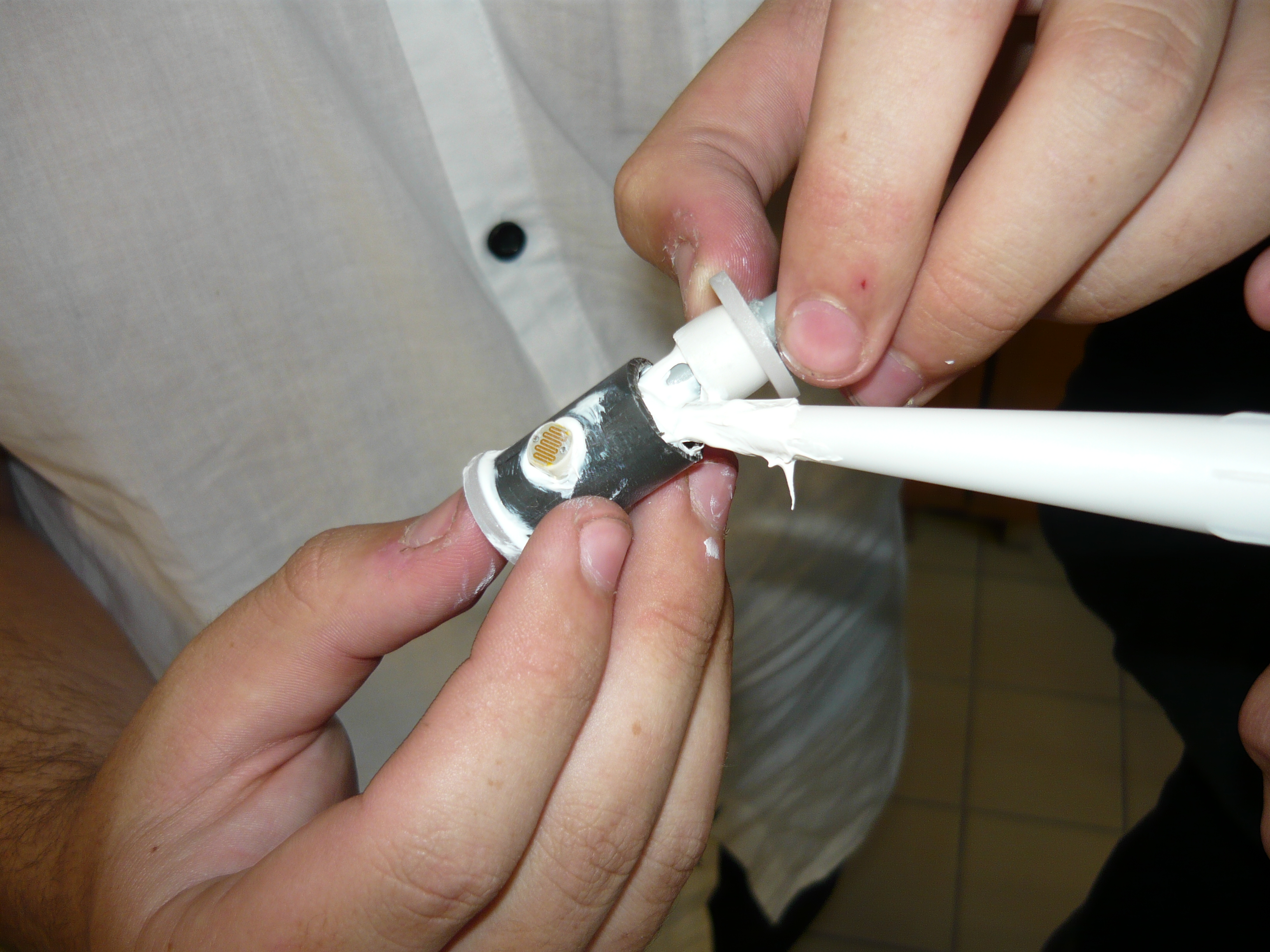The waterproofing of the sensors
Because water
is conductive, the branches of each metal sensor should not be indirect
contact with water.
To seal
the device sensors, we have introduced pieces of PVC
pipes of diameter 10mm and then we
put a cap on each side of the
tube (on the caps, we made a hole
forthe wire connected to the
buoy), then we all drowned in the marine
glue to preventinfiltration.


This device, installed at 2 m, 10 m
and 20 m deep, was finally
chosen after extensive
testing of different adhesives and assembly
systems unsuccessful.
Inside the buoy
We also conducted tests to find solutions to fill the empty space in the ring.
We Solicitating completed a plastic
ball (previously closed using glue: see
photo) withexpanded foam.

The problem is that the foam has been liquefied.

Tests directly on
the buoy were also carried out
in a garbage can and we
should testsoon buoy the
leisure Etampes and late May in La Rochelle.

In order to close the
buoy and to isolate
it from the water with
certainty, we also testeddifferent glues on balls in plastic, prefilled
with copper sulphate.